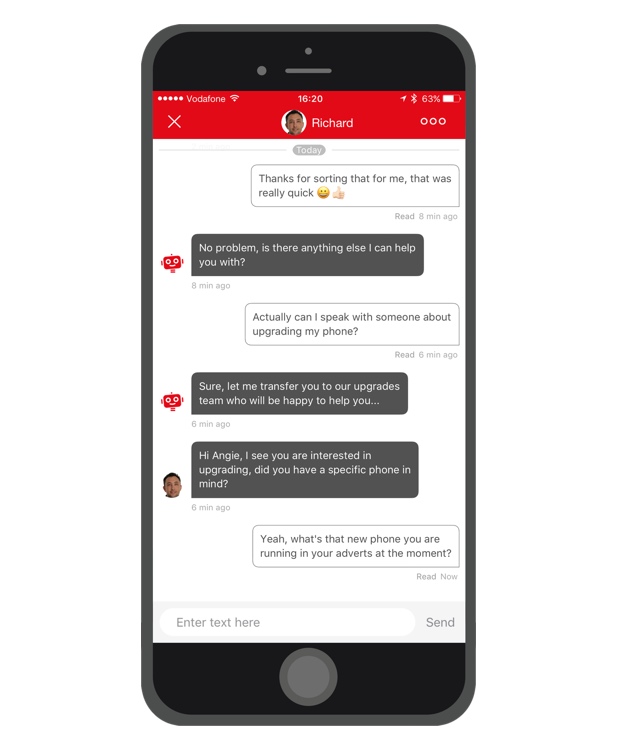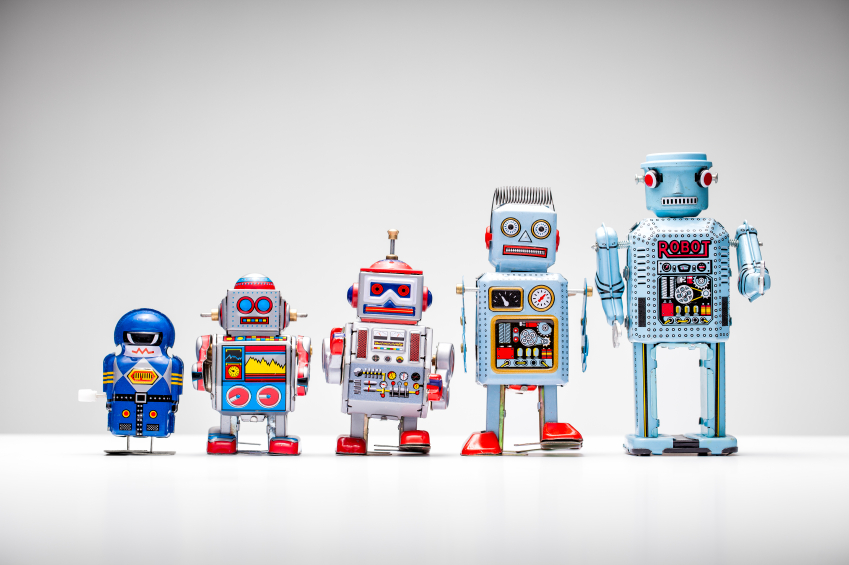I love to learn new things. And even more so, I do love when I see opportunities and possibilities to make something better or more efficient. In the beginning of May I had the fortunate pleasure of doing just that.
I was invited to participate in an event facilitated by a company called Liveperson, which is a software company building solutions for digital customer care, and customer interaction solutions (I’m not sure if that is there own way of describing their mission, but I guess I’m close enough). What they do is to push the evolution towards a blend of human and artificial response and service for large corporations.
At this point in time, the vastness of data combined with computational power and advances in AI and machine learning means we are just in the right time and place to start really thinking about this stuff.
So, here’s the thing. When my kids are grown up, they will interact with artificial humans in banks, utilities, operators, hospitals etc. Our workforce will most likely be a blend of an artificial workforce and regular human employees and the role of us poor humans will to a large extent be to program, manage and maintain robots.
We might not think in these terms today but it is happening. The question that we have to think about now is how, we prepare for this shift. A philosophical piece in the Guardian, recently suggested that online games, mimicking the real life games that is religion, would be one way of keeping people busy and satisfied.
Leaving the philosophical question aside. For businesses there are a number of drivers for this, the main ones obviously being efficiency and quality of service on the company part.
On the consumer side, we are inclined to seek human connections, but we are also driven by a desire to reduce stress and friction in our own lives. Most of the human interaction we have today, with companies and other official entities, is something that doesn’t add value, neither for us nor for the provider. Today, according to Liveperson, 264 billion phone calls are made every year to companies worldwide. The provider runs up a massive cost base and creates, at best customer satisfaction, or worse, negative experiences due to circumstances out of the human control.
The high-touch companies who relies on customer satisfaction for sustaining their business, have a delicate balance to handle – if the delivery of personal, high touch service fails, it quickly turns ugly. If you’re a large-scale business, the risks for that situation are real.
From synchronous to asynchronous communication
Another interesting shift is also underway. For many of our daily chores, we as humans went from preferring (or having no other option) synchronous to asynchronous communication – i.e. messaging. The consequence is that telephony and live human interaction is being replaced by something that doesn’t create massive costs, stress and just regular inefficiency on both sides of the spectrum. Having made this transition, from speech to text, has laid the foundation for replacing the human part. Obviously text is easier to replace than speech and the data that is needed to interact is also for the most part, text-based.
The artificial human
In defence of humans we have always thought that it is not possible to replace that human touch, and the personal service that a human can provide. The thing though, is that a robot with its bionic functionality has such an advantage compared to a human that it’s now even a competition.
So, what then is the human touch – and what do we need to do to replicate that? That is one of the things that Justine Cassell, Associate Dean for Technology Strategy and Impact in the School of Computer Science at Carnegie Mellon is working on.
She resides at Carnegie Mellon University in Pittsburgh , that harbors the people who laid the foundation for Apple’s Siri, and IBM’s Watson and probably a bunch of other things that we don’t know of. Their computer science department is probably one of the most distinguished in the world.
Building rapport in the interaction between a computer and a human and create relationships, understanding the human, and adapting the behaviour, tone of voice, how and what the computer answers in real-time, is what they are working on right now.
This opens the door, or at least unravels the possibility of an artificial human. When you have a robot that can converse, build relationships and understand subtle nuances of the interplay between people, and then continually adapt to changing circumstances. The stretch to see that working in a customer service function is not any longer radical.
For a company like a financial service provider, or telecom operator or any large-scale business for that matter, means you could have an almost unlimited amount of conversations on-going simultaneously.
The first stage of development – where we are now
 Before we get to experience a truly artificial human we will be in a phase where intermediary solutions and technologies will prevail. Such as chatbots and virtual agents that can provide customer service, answer basic FAQ-type questions connected to internal business processes. We are standing at the brink of this right now. Another advancement will come as they start to be able to answer questions that change dynamically, like account balances and other types of information that constantly changes in the back end. As we continue down this path, we will be able to analyse our previous behaviour, our life situation, our future plans and prescribing solutions and give advice for our financial lives.
Before we get to experience a truly artificial human we will be in a phase where intermediary solutions and technologies will prevail. Such as chatbots and virtual agents that can provide customer service, answer basic FAQ-type questions connected to internal business processes. We are standing at the brink of this right now. Another advancement will come as they start to be able to answer questions that change dynamically, like account balances and other types of information that constantly changes in the back end. As we continue down this path, we will be able to analyse our previous behaviour, our life situation, our future plans and prescribing solutions and give advice for our financial lives.
The future of personal connections
A customer service agent bound to telephone can manage one simultaneous connection, which might take anything from 1 minute to as much as 10, 15 or 20+ minutes. If you have one person operating a number of bots, each one of them can maintain up to 40 simultaneous asynchronous connections. For companies operating at scale, with a huge number of incoming requests, where the majority is of a standardised nature, this is what a brash management consultant would call a no-brainer. However, if you operate a high-touch and high tech financial institution, you would have to think deeply about how this transition would affect the perception. In what areas could it have positive impact and where it could be detrimental.
All of this lead us towards a future where personal connections will be, to a very large extent initiated, maintained and nurtured by robots. And – as a matter of fact – I think that this will lead to more connections, better customer experiences and more possibilities for companies to have conversations with their customers more actively and in the end, more rewarding.
What happens when conversations are natural but digital?
The thing is that people seem to like talking to a chat-robot, they actually show higher levels of satisfaction having their query managed by a bot, rather than a human. In developing conversational bots that has conversations in real-time they have found that people react by being more open, sharing more and generally being more openhearted.
This suggests that our behaviour change when we know that there’s not another human on the other side. For companies this means they can initiate, and keep open, deep long-term conversations about the customers’ goals and ambitions, that we then could cater to. The number of on-going conversations is virtually unrestricted.
Designed experiences
Today when we talk about UX we primarily constrain that to digital interfaces and physical experiences. Given the nature of bots and the impact they will have, we will soon be able to design the entire communication and experience that our customers have based on what emotions we aim to create when our customers meet us or talk to us. We can also, most likely, based on their personality and behaviour design unique one-to-one experiences.
The quasi-philosophical question – “who are we” – that management teams ask themselves on a regular basis, has never been harder to answer. But never before have we been so close to the possibility to actually implement the outcome of that question, in every aspect of how our customers will meet us.
Who we are will “merely” be a task for management, communication and UX-people to decide, design and implement by virtually designing the robots representing the company.
That is an interesting future.
